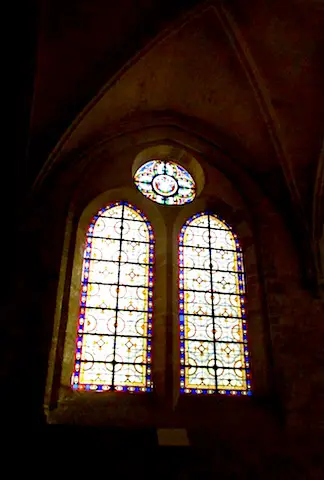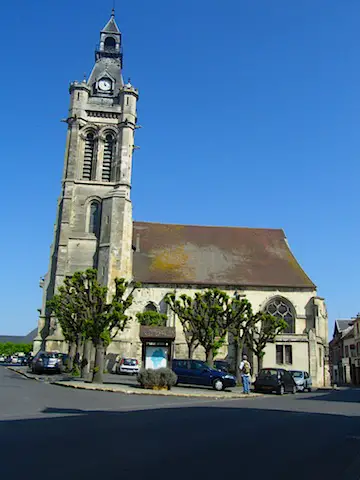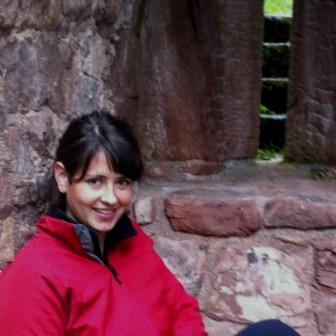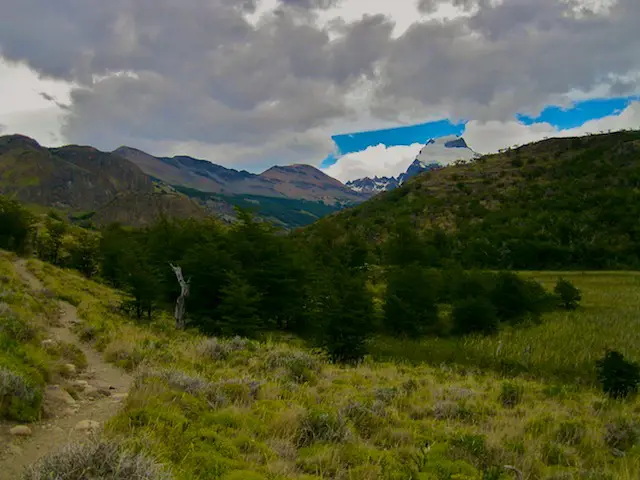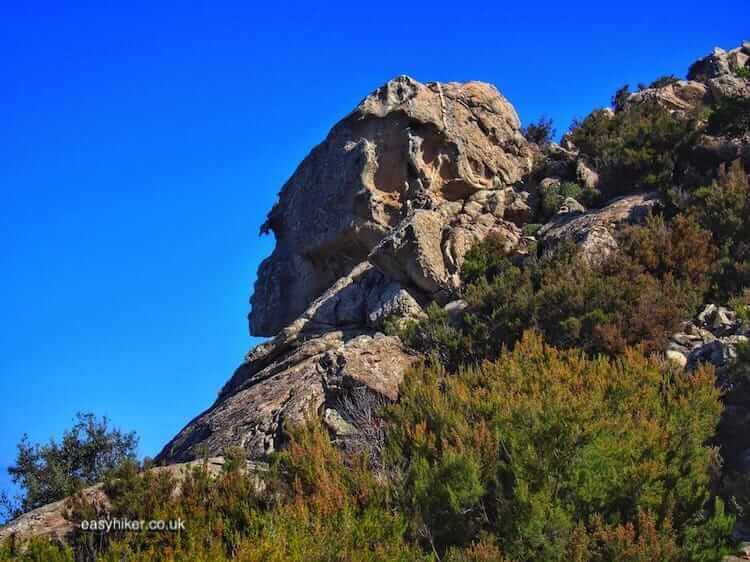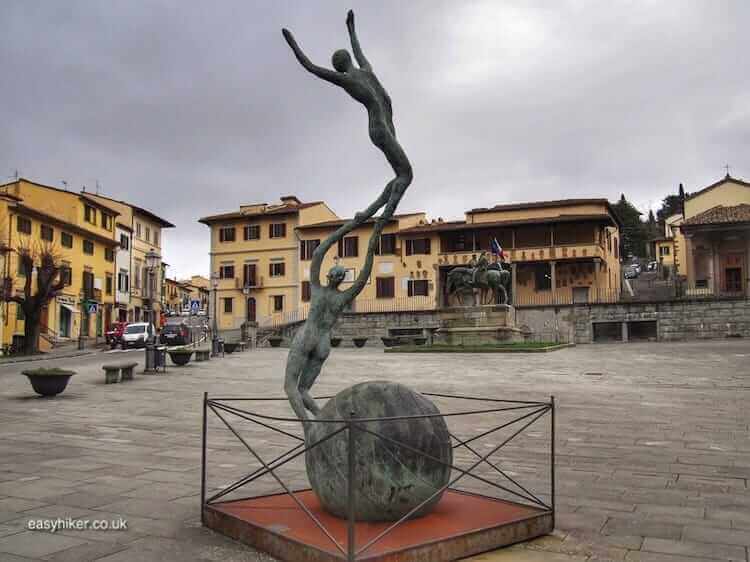The Paris Hiking Trail by Royaumont Abbey
The Royaumont Abbey near the town of Viarmes north of Paris has it all: a beautiful stained glass refectory, picturesque church ruins, a secluded cloister garden, a small showroom of medieval art (in the sacristy) and a large lawn which is perfect for a picnic on a sunny day.
It would be one of the foremost tourist attractions of the Ile de France – if it were not so remote, that is. Unfortunately for this particular Paris hiking trail, this is exactly its problem.
The nearest train station to the Abbey is Viarmes, 45 minutes from the Gare du Nord. (Viarmes is served hourly on the trains going to Luzarches.)
From the Viarmes station, you can follow the route recommended by the Federation Francaise de la Randonnee, the French Hiking Association, which leads you on a sweeping detour to the Abbey and on another sweeping detour back to Viarmes, but that route has a total length of a cool 16 km and is probably just too much for most visitors – unless you don’t mind leaving on the first train out and returning on the last train in.
We, at any rate, decided to head straight for the Abbey from Viarmes train station, joining the FFR route on the back leg, the “return detour”, cutting the hike’s total length down to a more manageable 10 km. This route leads you straight down the Rue de la Gare into town, past the pretty church and eventually to a roundabout where you also find a Carrefour supermarket to stock up on anything you may need or have forgotten.
Keep on straight past that roundabout, staying on the D909 (a busy road but there is a sidewalk) until you see the road signs pointing to Baillon. Turn right here, past the artificial lake on your right hand side (the buildings on your left are already part of the Abbey compound) and turn left after the Royaumont bus stop until you reach the entrance. (To enter the Abbey and its gardens, you need to purchase a ticket for € 6.)
The buildings and the gardens of Royaumont are well worth the trip.
The Abbey was established by Louis IX who, unlike his namesake a few generations further down the Bourbon line, did not spend all the state’s money for a single castle but scattered it instead by funding the Abbey, conducting a couple of crusades and by acquiring a huge variety of sacred knickknack including a nail of the True Cross, the Crown of Thorns and assorted body parts of assorted holy men and women.
For this devotion, he was later awarded the epithet “Saint”. (The second island in the Seine is named after him – as is “the gateway to the west”, of course, the town of Stan The Man, The White Rat and Big Albert.)
The real hike for us on this Paris hiking trail began after leaving the Abbey. Out of the gate, we turned left until we reached the D909 again, where turned left and shortly afterwards right – following the red-white trail markers – along the Oise river before turning left towards another busy main road, the D922, and eventually passing underneath it to turn back towards Viarmes.
Would I recommend this hike to anyone?
Okay, let me put it like this. In Germany, hiking trails are subjected to a range of Standardized Assessment Criteria. In order to win one of the coveted certifications as a Quality Hiking Trail, trails must pass several tests.
First, they must slip underneath the ceiling of various exclusion criteria.
If a hiking trail features 3% of busy roads OR if 20 percent of the trail is covered by asphalt OR if 10 percent of the trail leads the hiker past intensively used agricultural fields OR past busy roads, the trail is already disqualified.
Once a trail has cleared those hurdles, however, it still needs to win a certain amount of points for other, more loosely defined elements of “quality”: points are awarded for each formation change (from forest to meadow, for example), attractive features of the landscape such as lakes, rocks and gorges, idyllic scenery and beautiful views, anything that makes a trail interesting.
Civilization is not considered a bad thing per se: plus points are awarded for pretty villages, castles and even small roadside monuments, but there are also minus points for “architectural tristesse”, tall pylons, industrial parks and landfill sites.
How would the Royaumont hike have fared?
Well, to begin with, it would have been disqualified on all four “percentage” counts. That, if you think about it, is already quite an achievement.
And how many points would it have scored? I nearly gave it one plus point, but we came across the little wayside shrine before we even left Viarmes, so that does not really count.
And the sole view across the river Oise which we got was marred by the sight of the cement factory on the other bank. Which leaves the Royaumont trail with a big fat zero. Nul points.
Minus points, on the other hand, there were quite a few.
Tristesse? Yup. Industrial parks? Gotcha. Pylons: how many do you want?
There was no landfill site, admittedly. But I can’t help wondering what the German Hiking Trail Assessor would have made of the abandoned hobo camp in the concrete underpass – the one with the campfire and the half-burned baby shoe.
I actually suspect he would have been happy like a pig in the mud, chuckling away and merrily taking pictures. “I cannot vait for ze guyz at the Deutscher Wanderverein to see zis!”
Royaumont, in one word, was not our most successful trip ever.
If it was not a complete waste of time, this was due to the fact that the trail met my personal three most important “quality criteria”: the sun on my back (not only was it a sunny day: we tend to pick these for our day outings, but there were also precious few trees along the way which could have blocked it), the wind in my face (ditto, one might say) and, at the end of the day, a cool drink and a smoke on the shaded terrace of a nice bistro.
If you don’t believe that this can make up for a lot of grind and wearisome trudging, you clearly have never tried it.



